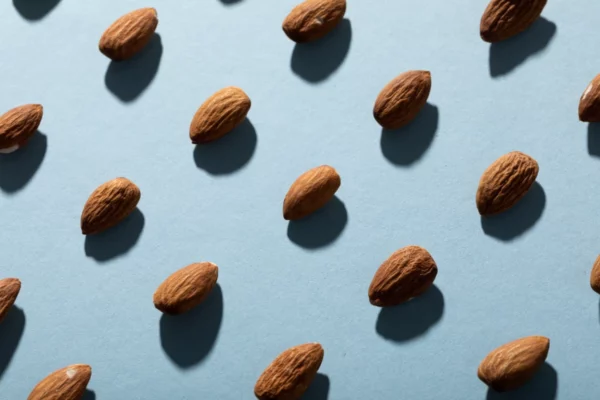Fiber is often an overlooked but essential nutrient in a child’s diet. In today’s fast-paced world, where convenience often trumps nutritional value, ensuring that our children get enough fiber is more critical than ever. This blog post will delve into the benefits of fiber in children’s diets, explore the different types of fiber, identify high-fiber foods, and provide practical tips for incorporating fiber-rich foods into your child’s diet.
Understanding Fiber
Fiber is a type of carbohydrate found in plant-based foods. Unlike other carbohydrates, such as sugars and starches, fiber is not digested by the body. Instead, it passes through the digestive tract relatively intact, providing numerous health benefits along the way.
There are two primary types of dietary fiber: soluble and insoluble.
- Soluble Fiber: This type of fiber dissolves in water and forms a gel-like substance in the digestive tract. Soluble fiber is known for its ability to lower cholesterol levels and stabilize blood sugar levels. It is found in foods like oats, beans, lentils, fruits, and vegetables.
- Insoluble Fiber: Insoluble fiber, on the other hand, does not dissolve in water. It adds bulk to stool and helps prevent constipation by promoting regular bowel movements. Foods rich in insoluble fiber include whole grains, nuts, seeds, and the skins of fruits and vegetables.
The Benefits of Fiber for Children
Now that we understand the types of fiber, let’s explore why fiber is so crucial for the health and well-being of young children.
- Promotes Digestive Health: Insoluble fiber adds bulk to stool, softens it, and helps it pass through the digestive tract more easily. This is particularly important for preventing constipation in children.
- Supports Healthy Growth: Fiber-rich foods, such as whole grains, fruits, and vegetables, provide essential nutrients that growing children need. These foods are not only rich in fiber but also in vitamins, minerals, and antioxidants necessary for overall health and development.
- Regulates Blood Sugar Levels: Soluble fiber helps regulate blood sugar levels by slowing the absorption of sugars from the digestive tract. This can be particularly beneficial for children with or at risk of diabetes.
- Maintains Healthy Weight: High-fiber foods are often lower in calories and can help children feel fuller for longer. This can aid in weight management by reducing overeating and unhealthy snacking habits.
- Reduces the Risk of Chronic Diseases: A diet rich in fiber has been associated with a lower risk of chronic diseases later in life, such as heart disease, type 2 diabetes, and certain types of cancer. Establishing healthy dietary habits in childhood can have a long-lasting impact on overall health.
Now that we’ve covered the numerous benefits of fiber for children, let’s explore the best sources of fiber and how to incorporate them into your child’s diet.
Good Sources of Fiber for Children
- Whole Grains: Whole grains are an excellent source of dietary fiber. Choose foods like whole-grain bread, brown rice, whole-wheat pasta, and oatmeal over their refined counterparts. Make sandwiches with whole-grain bread, or add cooked brown rice to your child’s favorite stir-fry.
- Fruits: Fruits are naturally fiber-rich and provide essential vitamins and minerals. Some great choices include apples, pears, berries, oranges, and kiwi. Encourage your child to snack on fresh fruits or add them to yogurt or oatmeal.
- Vegetables: Vegetables are packed with fiber and a variety of nutrients. Serve a colorful array of vegetables like broccoli, carrots, bell peppers, and spinach to entice picky eaters. Sneak veggies into sauces or make vegetable-based snacks like baked sweet potato fries.
- Legumes: Beans, lentils, and chickpeas are high in soluble and insoluble fiber. Incorporate them into soups, stews, salads, or burritos. Hummus made from chickpeas is also a tasty, fiber-rich dip for raw vegetables or whole-grain crackers.
- Nuts and Seeds: Almonds, chia seeds, and flaxseeds are excellent sources of fiber. Sprinkle them on yogurt, oatmeal, or add them to homemade smoothies for an extra fiber boost.
- Whole-Grain Cereals: Choose whole-grain cereals that are low in sugar and high in fiber. Check the nutrition facts label for grams of dietary fiber per serving. Serve with low-fat milk or a dairy-free alternative.
- Popcorn: Air-popped popcorn is a fun and healthy snack that is rich in fiber. Skip the butter and use a sprinkle of nutritional yeast or a light drizzle of olive oil for flavor.
- Peanut Butter: Opt for natural peanut butter that contains no added sugar or hydrogenated oils. Spread it on whole-grain bread or use it as a dip for apple slices or celery sticks.
Practical Tips for Increasing Fiber Intake in Children
- Gradual Changes: Introduce fiber-rich foods gradually to avoid overwhelming your child’s taste buds. Slowly incorporate new items into their diet and be patient with picky eaters.
- Make it Fun: Present fiber-rich foods in creative and appealing ways. Arrange colorful fruits and vegetables in fun shapes or serve them with a tasty dip. Engaging children in the preparation process can also make them more excited about trying new foods.
- Offer Variety: Provide a variety of high-fiber foods to ensure your child gets a broad range of nutrients. Rotate between different fruits, vegetables, grains, and legumes to keep meals interesting.
- Fiber Supplements: While it’s best to obtain fiber from natural food sources, some children may benefit from a fiber supplement, especially if they have chronic constipation. Consult with a healthcare professional before using supplements.
- Stay Hydrated: Ensure your child drinks plenty of water when increasing their fiber intake. Fiber absorbs water, and proper hydration is essential for smooth digestion.
- Be a Role Model: Children are more likely to embrace healthy habits if they see their parents or caregivers doing the same. Set a positive example by including fiber-rich foods in your own diet.
- Read Labels: When shopping for packaged foods, check the nutrition facts label for the fiber content. Choose products with higher fiber grams per serving.
- Age-Appropriate Portions: Remember your child’s age and energy needs when serving high-fiber foods. Young children may require smaller portions than teenagers.
Conclusion
Ensuring your child gets enough fiber in their diet is a simple yet effective way to promote their health and well-being. You can support their digestive health, growth, and overall vitality by incorporating whole grains, fruits, vegetables, legumes, and other high-fiber foods into their meals and snacks. Remember that establishing healthy eating habits early in life can set the stage for a lifetime of good health. So, make fiber an essential part of your child’s diet, and watch them thrive.









